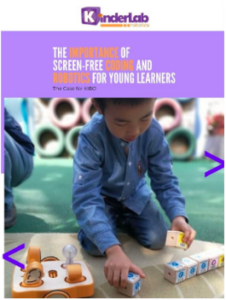Wall Street Journal: The Best Robot Toys for Building Kids’ STEM Skills
In this article, the author discusses how robot toys and kits help “teach children problem-solving skills—ones they’ll need as they grow into adults in a world run by machines”.
The article reads in part:
“There are still reasons to buy robot kits for these worldly kids. Building a friendly bot-toy helps children adapt even more readily to a changing world and develop STEM skills—in science, technology, engineering and math. It also pushes them to think creatively and hone life skills. “Coding by itself teaches you how to break the problem into steps and how to approach it methodically,” said Vishal Raina, CEO and founder of YoungWonks, a coding school for children.
Nevertheless, there are still reasons to buy robot kits for these worldly kids. Building a friendly bot-toy helps children adapt even more readily to a changing world and develop STEM skills— in science, technology, engineering and math. It also pushes them to think creatively and hone life skills. “Coding by itself teaches you how to break the problem into steps and how to approach it methodically,” said Vishal Raina, CEO and founder of YoungWonks, a coding school for children. “That kind of skill is going to help you in anything you do in life.”
‘You can see the kids’ excitement in their whole bodies, in their eyes.’
Competitions teach students collaboration and conflict-resolution, on top of STEM skills. That said, Marina Umaschi Bers, chair of the department of child study and human development at Tufts University, who has developed her own robot toy system for kids called KIBO, argues that the value of building and coding bots comes from the creative process of iteration, and that outcomes-based activities like competitions can overlook that value.
She divides the glut of robot toys into more black-and-white categories: There are “playpen” robots that are fun, but teach few skills and require little input from the user, like the WowWee Miposaur, a futuristic dino that lets kids play fetch. But she prefers “playground” robots that require creativity and enable collaboration…
Whatever the end goal, the process of creating becomes the reward, said Mr. Raina. When kids find “a solution to something they have never worked on, the level of excitement that you can see in their whole body, in their eyes, their expression…it’s an incredible feeling just to watch them,” he said. “That is the high you are going to give them.”
That high, and the skills they develop, will serve them throughout their strange, futuristic lives. They’ll know they’re capable of overcoming obstacles of all shapes and sizes—even if robots will be on hand to do much of the work anyway.”



















